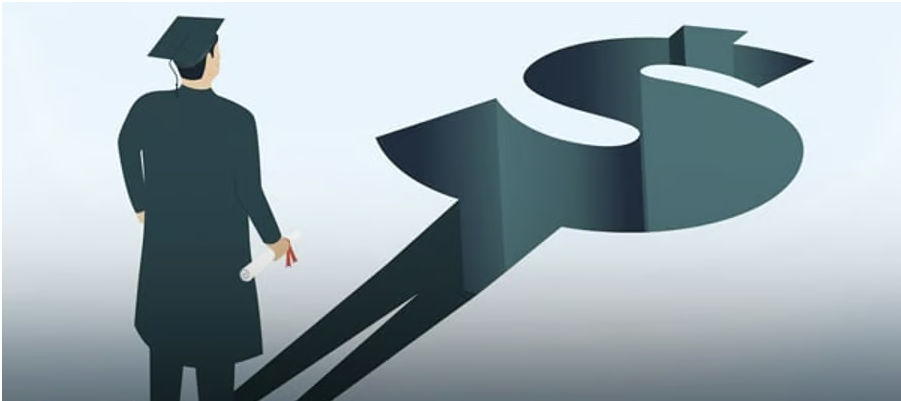There are many different types of student loan repayment plans, and choosing the best one for you depends on your personal financial situation, debt level, and future goals. This article provides a structured overview of the main repayment plans, helping you understand the features and applicable scenarios of each plan, so you can choose the best repayment path.
Repayment Plan Overview
Standard Repayment Plan
- Best for: Borrowers who want to pay off their loans quickly and avoid long-term interest accrual.
- Repayment Term: Typically 10 years, with longer terms depending on the total loan amount (up to 25 years).
- Repayment Amount: Fixed monthly payment, starting at $50.
- Pros: Fast repayment and lowest overall interest payments.
- Cons: High monthly payments, which may be too burdensome for those with high debt; no income adjustment.
- Automatic Enrollment: Most borrowers are automatically enrolled in this plan unless they choose another one.
Income-Driven Repayment (IDR) plans
Monthly payments are adjusted based on income and family size, suitable for borrowers with low income or high debt. These plans primarily include the following:
- SAVE Plan (Saving on a Valuable Education)
- An emerging plan focused on reducing monthly payments for low-income individuals, offering support for deferrals and partial forgiveness.
- PAYE (Pay As You Earn) Plan
- Monthly payments are 10% of disposable income, with repayments paid off over a maximum of 20 years.
- Supports Public Service Loan Forgiveness (PSLF).
- Suitable for those with expected income growth but limited current income.
- New IBR (Income-Based Repayment, New IBR)
- Monthly payments are also 10% of disposable income, with a design similar to PAYE.
- Suitable for borrowers who first borrowed after July 1, 2014. Old IBR
- Monthly payments are 15% of adjusted gross income, less 1.5 times the poverty level.
- For Federal Family Education Loan (FFEL) borrowers and certain older borrowers.
- Can file a separate tax return to affect repayment amounts.
- Income-Contingent Repayment (ICR)
- Monthly payments are 20% of disposable income, with a maximum repayment period of 25 years.
- Available to borrowers of Parent PLUS loans, requiring consolidation.
Graduated Repayment Plan
- Suitable for borrowers with low current income but projected steady income growth.
- Initial payments are low, increasing every two years for a 10-year term.
- Overall interest costs are lower than some IDR plans, but monthly payments increase over time, requiring confidence in income growth.
Extended Repayment Plan
- With terms up to 25 years, this plan is suitable for borrowers with significant debt who find a standard plan difficult to afford.
- Monthly payments can be fixed or increasing.
Private Student Loan Repayment
Private loan repayment plans generally don’t offer income adjustments, and the specific terms vary by lender. Many private borrowers choose to refinance to lower their interest rate and monthly payments, provided they have a good credit score or have a co-signer.
How to Choose the Best Repayment Plan?
When choosing a repayment plan, consider the following goals:
Goal 1: Reduce Monthly Payment Pressure
- Prioritize income-driven repayment plans (such as SAVE, PAYE, and IBR), adjusting payments based on actual income.
- If you have a stable income base but are experiencing temporary financial pressure, consider an increasing repayment plan, which gradually increases your monthly payments.
Goal 2: Pay off the loan quickly and reduce interest payments
- The standard repayment plan is the fastest and lowest overall repayment option.
- Those who are able to make an overpayment can make additional principal payments on top of this.
Goal 3: Obtain loan forgiveness (such as Public Service Loan Forgiveness (PSLF))
- You must be enrolled in an eligible income-driven repayment plan and have completed the required number of consecutive repayments in qualified public service employment.
- PAYE, IBR, and SAVE plans all qualify for PSLF; please ensure you meet the specific eligibility requirements when choosing.
Plan Changes and Notes
- After July 1, 2026, some legacy plans will close and be replaced by new ones, with the SAVE plan being particularly recommended.
- Borrowers should select the right plan as early as possible to maintain eligibility.
- Use the “Loan Simulator” tool on the Federal Student Aid website to simulate the monthly payments of different repayment plans to assist in choosing a loan.
- You can switch repayment plans at any time without incurring any additional fees.
The best path to student loan repayment varies from person to person. Understanding each plan’s repayment period, monthly payment calculation, and incentives is crucial. Income-driven plans are suitable for those with limited incomes, standard plans are suitable for those with strong repayment capabilities, and loan forgiveness can be a game-changer. Borrowers are advised to develop a sound repayment strategy based on their individual circumstances, utilizing official tools and professional counseling.
